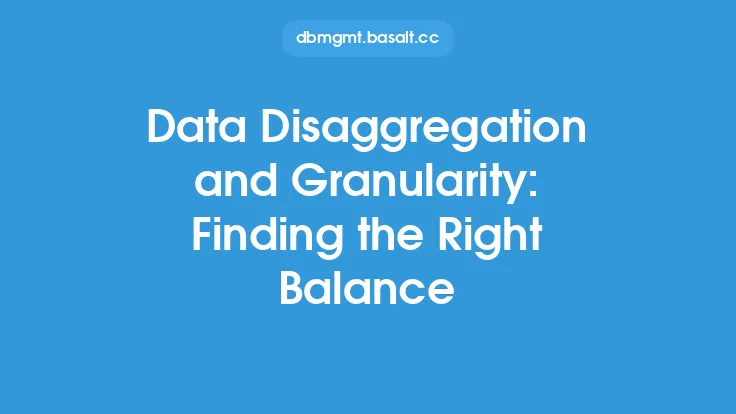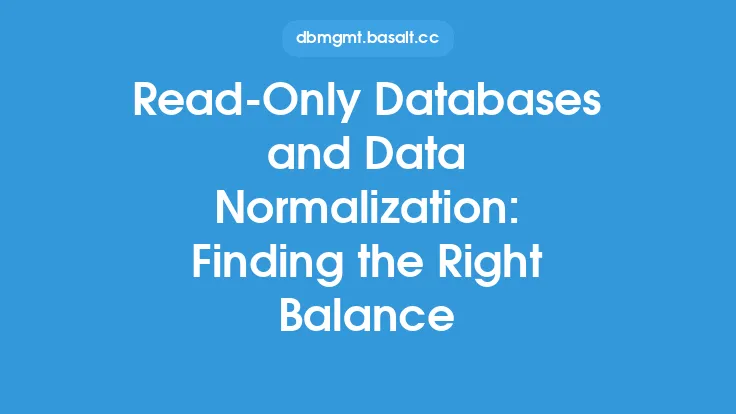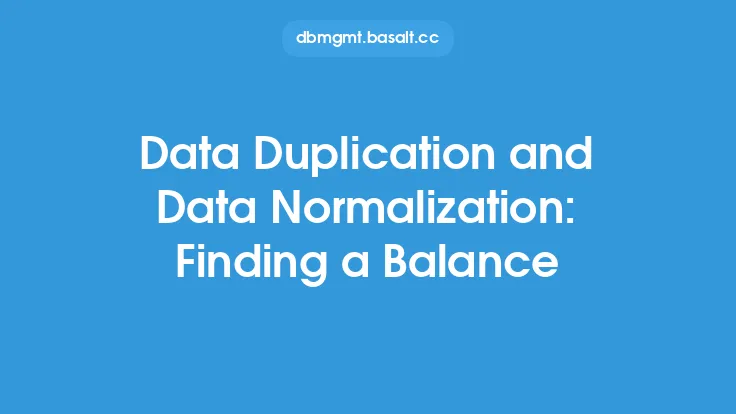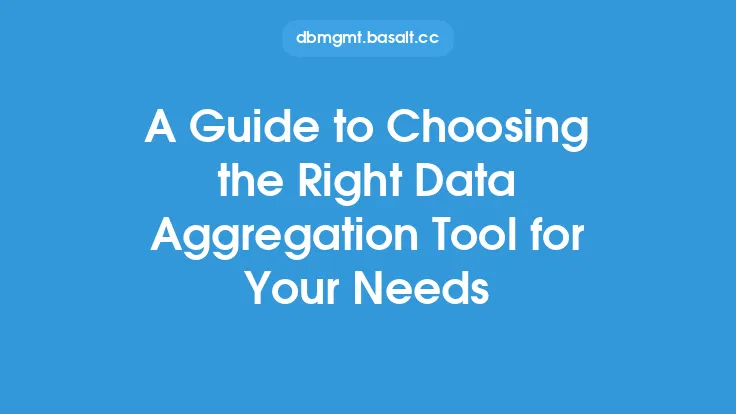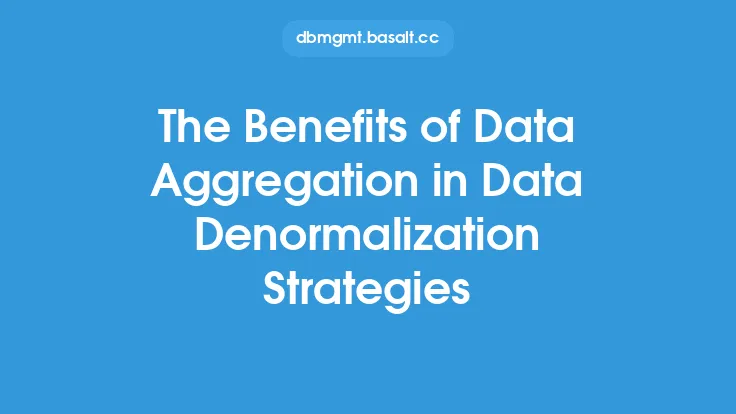When dealing with large datasets, it's essential to find a balance between data aggregation and data granularity. Data aggregation refers to the process of combining multiple data points into a single, more comprehensive piece of information, while data granularity refers to the level of detail or specificity of the data. Finding the right balance between these two concepts is crucial for effective data analysis, reporting, and decision-making.
Introduction to Data Aggregation
Data aggregation is a fundamental concept in data analysis, as it enables users to summarize and analyze large datasets more efficiently. By aggregating data, users can identify trends, patterns, and correlations that might be difficult to discern from individual data points. Common aggregation techniques include sum, average, count, and group by, which can be applied to various data types, such as numerical, categorical, and temporal data.
Understanding Data Granularity
Data granularity, on the other hand, refers to the level of detail or specificity of the data. High-granularity data is highly detailed and specific, while low-granularity data is more general and abstract. The level of granularity required depends on the specific use case and the goals of the analysis. For example, in financial analysis, high-granularity data might be required to analyze individual transactions, while in marketing analysis, lower-granularity data might be sufficient to analyze customer demographics.
The Trade-Off Between Data Aggregation and Data Granularity
There is a trade-off between data aggregation and data granularity. As data is aggregated, the level of granularity decreases, and the data becomes less detailed. Conversely, as the level of granularity increases, the data becomes more detailed, but it may be more difficult to analyze and summarize. Finding the right balance between data aggregation and data granularity is essential to ensure that the data is useful and meaningful for analysis and decision-making.
Factors to Consider When Balancing Data Aggregation and Data Granularity
Several factors should be considered when balancing data aggregation and data granularity. These include:
- The purpose of the analysis: Different analyses require different levels of granularity. For example, a high-level summary of sales data might require low-granularity data, while a detailed analysis of customer behavior might require high-granularity data.
- The size and complexity of the dataset: Larger and more complex datasets may require more aggregation to make them manageable, while smaller datasets might require less aggregation.
- The level of detail required: The level of detail required depends on the specific use case and the goals of the analysis.
- The performance and scalability of the system: Aggregating large datasets can be computationally intensive and may impact system performance.
Techniques for Balancing Data Aggregation and Data Granularity
Several techniques can be used to balance data aggregation and data granularity, including:
- Roll-up and drill-down: This technique involves aggregating data to a higher level of granularity and then drilling down to a lower level of granularity as needed.
- Data warehousing: Data warehousing involves storing data in a centralized repository and using aggregation and granularity techniques to analyze and report on the data.
- Online analytical processing (OLAP): OLAP involves using specialized software to analyze and summarize data in real-time, allowing for flexible aggregation and granularity.
- Data visualization: Data visualization involves using graphical representations to display data, which can help to balance aggregation and granularity by providing a high-level overview of the data while still allowing for drill-down to lower levels of granularity.
Best Practices for Implementing Data Aggregation and Data Granularity
To implement data aggregation and data granularity effectively, several best practices should be followed:
- Define clear goals and objectives for the analysis: This will help to determine the required level of granularity and aggregation.
- Use a flexible data model: A flexible data model will allow for easy changes to the level of aggregation and granularity as needed.
- Use data visualization: Data visualization can help to communicate complex data insights and balance aggregation and granularity.
- Monitor and adjust: The level of aggregation and granularity should be monitored and adjusted as needed to ensure that the data is useful and meaningful for analysis and decision-making.
Common Challenges and Pitfalls
Several common challenges and pitfalls should be avoided when balancing data aggregation and data granularity, including:
- Over-aggregation: Over-aggregation can result in a loss of detail and specificity, making it difficult to analyze and understand the data.
- Under-aggregation: Under-aggregation can result in data that is too detailed and specific, making it difficult to summarize and analyze.
- Inconsistent granularity: Inconsistent granularity can make it difficult to compare and analyze data across different datasets and systems.
- Poor data quality: Poor data quality can impact the accuracy and reliability of the data, making it difficult to balance aggregation and granularity.
Conclusion
Finding the right balance between data aggregation and data granularity is essential for effective data analysis, reporting, and decision-making. By understanding the trade-off between these two concepts and using techniques such as roll-up and drill-down, data warehousing, OLAP, and data visualization, users can ensure that their data is useful and meaningful for analysis and decision-making. By following best practices and avoiding common challenges and pitfalls, users can unlock the full potential of their data and make informed decisions to drive business success.
